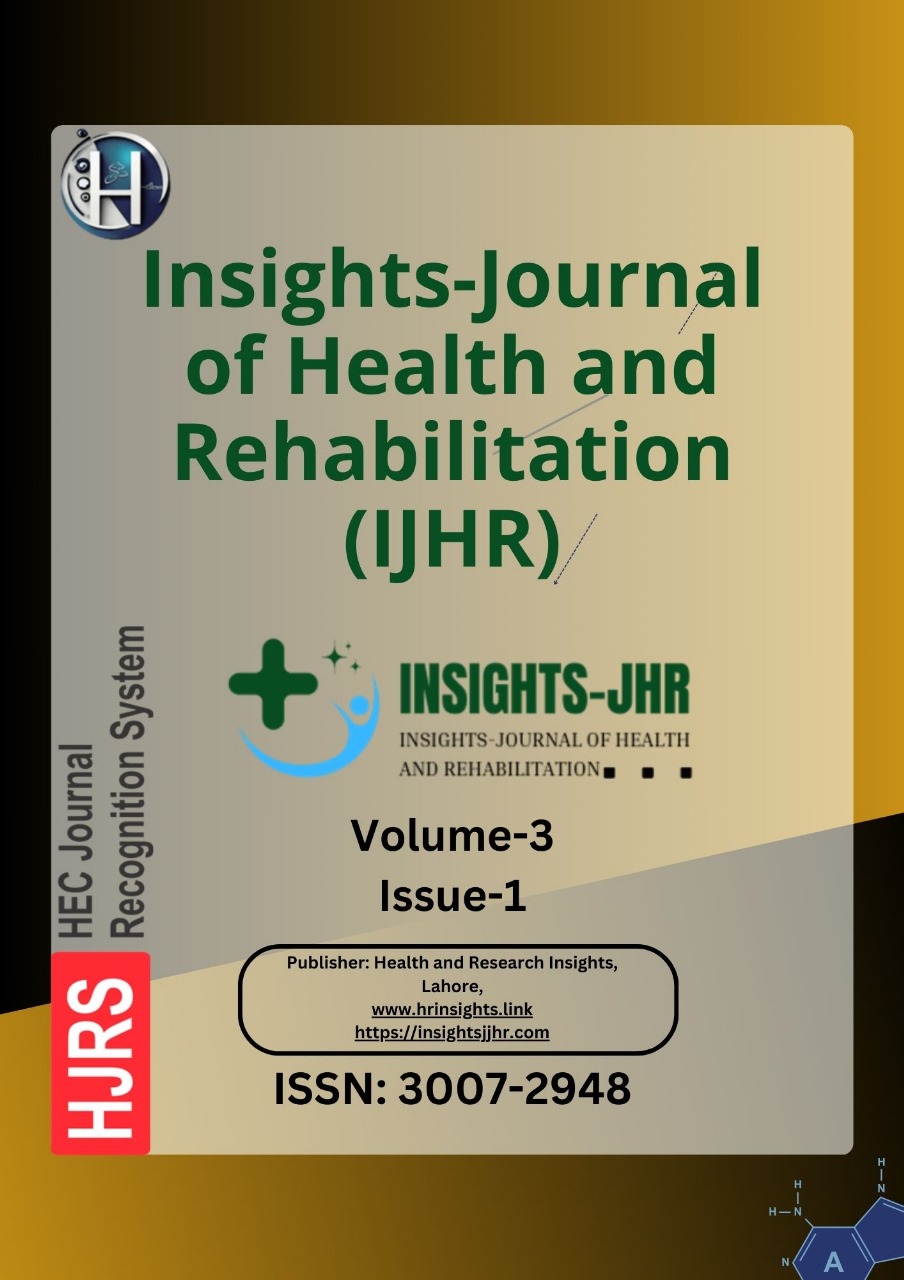CO-INFECTION RATE OF MALARIA AND TYPHOID IN NORTHERN AND CENTRAL REGIONS OF KHYBER PAKHTUNKHWA, PAKISTAN
DOI:
https://doi.org/10.71000/c317kf77Keywords:
Co-infection, Diagnosis, Malaria, Pakistan, Prevalence, Plasmodium, Salmonella typhiAbstract
Background: Malaria and typhoid fever are significant infectious diseases in tropical and subtropical regions, particularly in areas with poor sanitation and widespread vector breeding grounds. Malaria is caused by protozoan parasites of the Plasmodium genus, while typhoid fever is a bacterial infection resulting from Salmonella enterica serovar Typhi. Despite their distinct etiologies, co-infection with both pathogens is frequently reported in malaria-endemic regions, complicating diagnosis and treatment. Reliable diagnostic tools are crucial to distinguish these infections, as overlapping symptoms often lead to misdiagnosis and inappropriate treatment.
Objective: This study aimed to determine the prevalence of malaria, typhoid fever, and their co-infection in the Swat, Dir Lower, and Mardan districts of Khyber Pakhtunkhwa, Pakistan, while evaluating diagnostic challenges and public health implications.
Methods: A cross-sectional study was conducted from November 2018 to April 2019 in hospitals across the selected districts. A total of 400 febrile patients, aged 1 to 40 years, were randomly recruited. Blood samples were collected and tested using the malaria parasite (MP) test for Plasmodium species and the Widal agglutination test for Salmonella Typhi detection. Data were analyzed using SPSS, and chi-square tests were applied to assess statistical significance between demographic variables and infection rates.
Results: Malaria was detected in 168 patients (42.00%), while 126 (31.50%) tested positive for typhoid fever. Co-infection with both pathogens was found in 34 patients (8.50%). The highest prevalence of malaria was recorded in Mardan (44.11%), followed by Swat (41.79%) and Dir Lower (38.80%). Typhoid fever was most prevalent in Mardan (33.82%), with slightly lower rates in Swat (31.34%) and Dir Lower (28.35%). Co-infection rates were highest in Swat (9.70%), followed by Mardan (8.20%) and Dir Lower (7.50%). The incidence was higher in children (12.00% in ages 1–10) and females (9.50%) compared to males (7.50%). Seasonal variation showed co-infection peaking in November (10.28%) and April (10.44%), with the lowest rates in January and February (5.97%). Statistical analysis showed no significant gender (p = 0.5907) or age-group (p = 0.4402) differences in co-infection prevalence.
Conclusion: The findings indicate a substantial burden of malaria and typhoid fever in the study regions, with notable co-infection rates and diagnostic challenges. The high rate of false positives in Widal testing suggests the need for more reliable diagnostic tools, such as molecular and blood culture techniques, to improve disease identification and management. Public health interventions focusing on improved sanitation, vaccination, and enhanced diagnostic accuracy are essential to reduce the disease burden in endemic areas.
Downloads
Published
Issue
Section
License
Copyright (c) 2025 Wasia Ullah, Abdul Nasir, Muhammad Izaz, Muhsin Khan, Rabia Rabia, Ihsan Ullah (Author)

This work is licensed under a Creative Commons Attribution-NonCommercial-NoDerivatives 4.0 International License.







